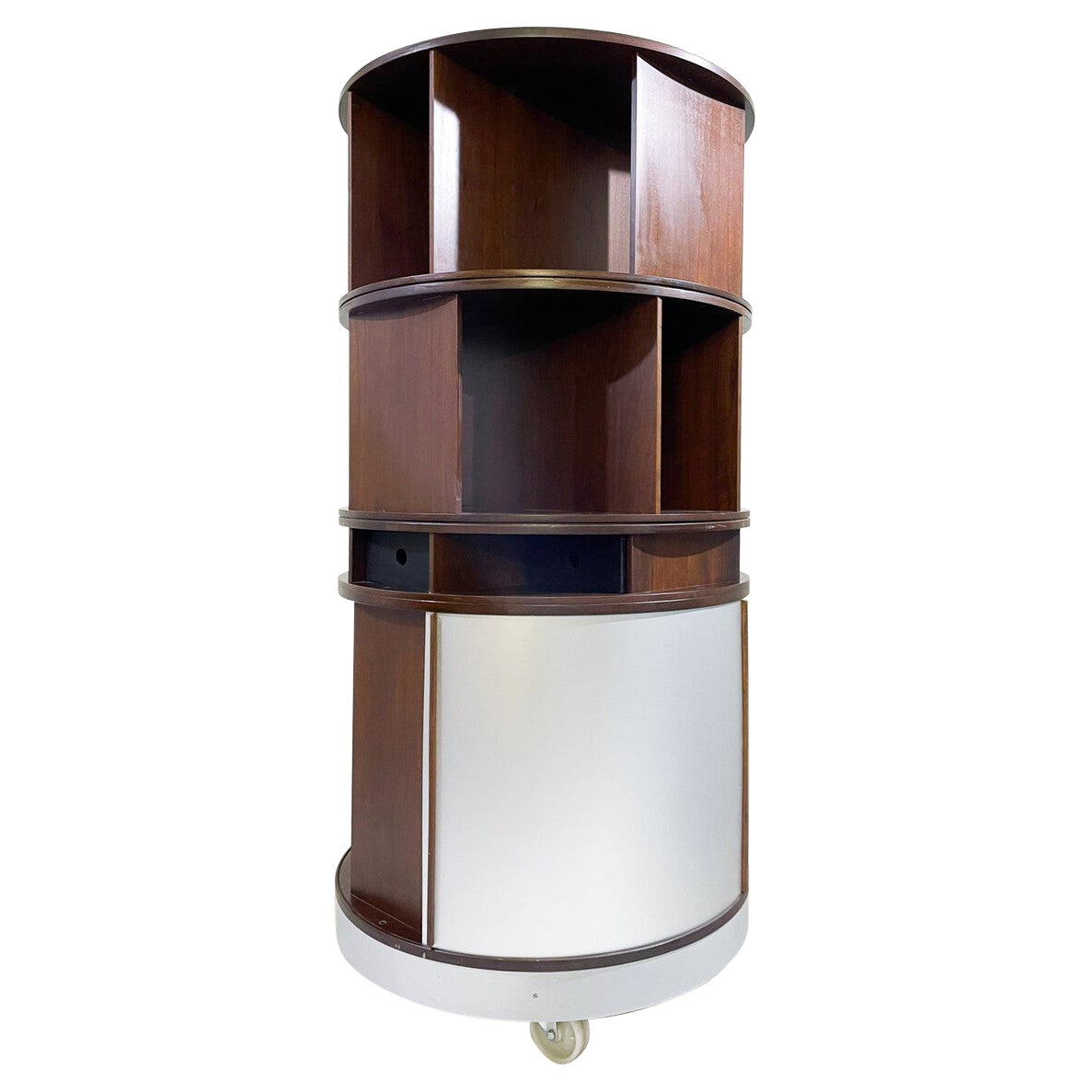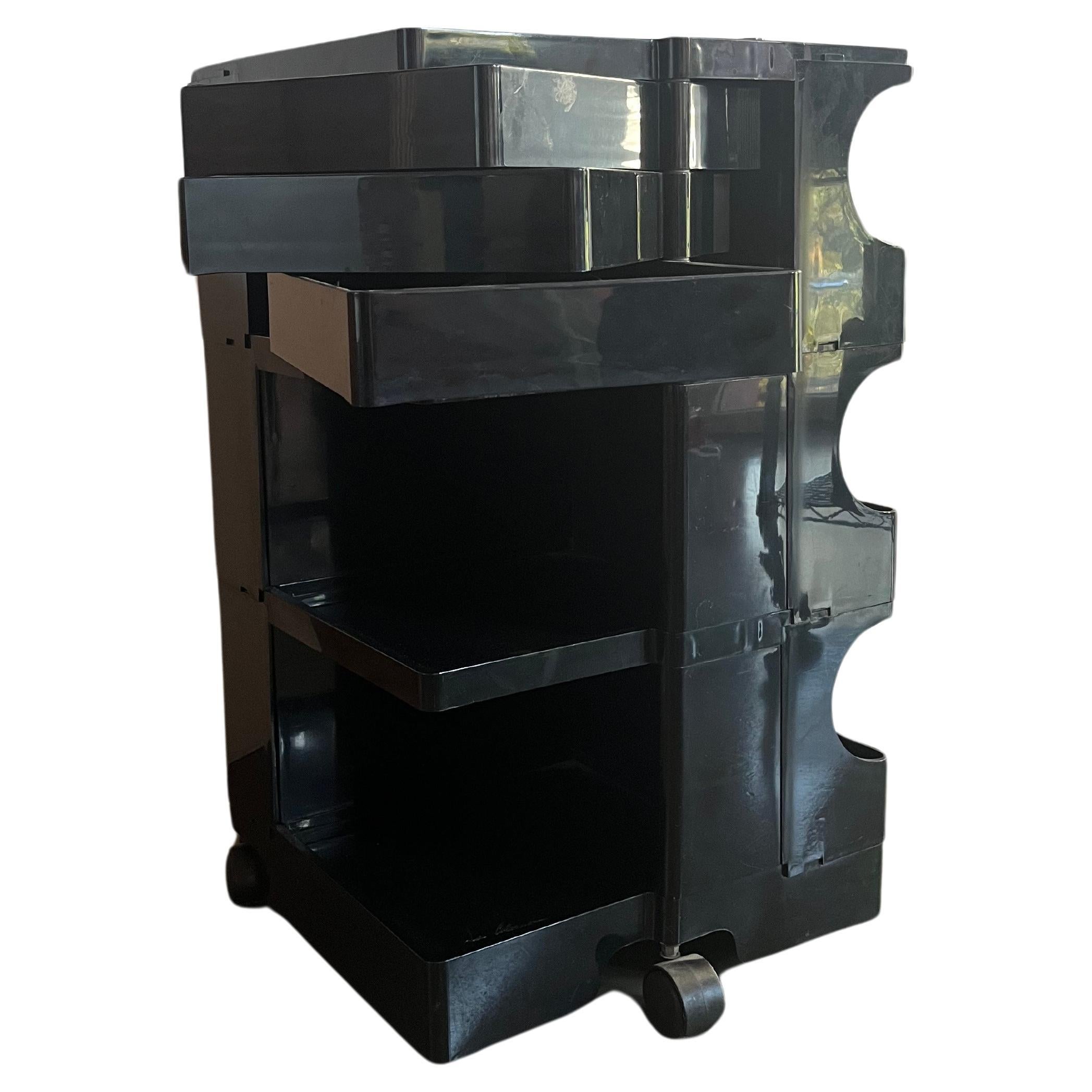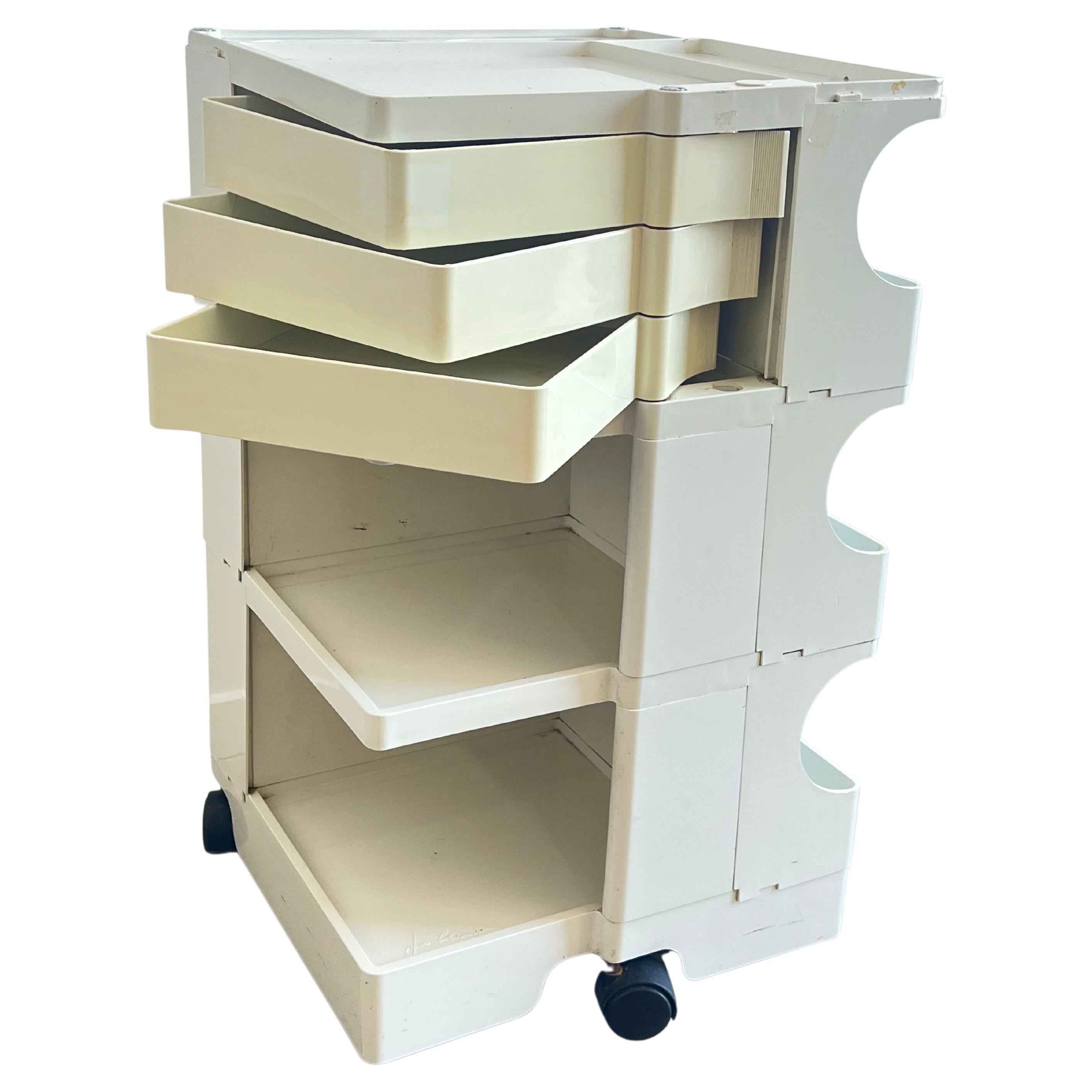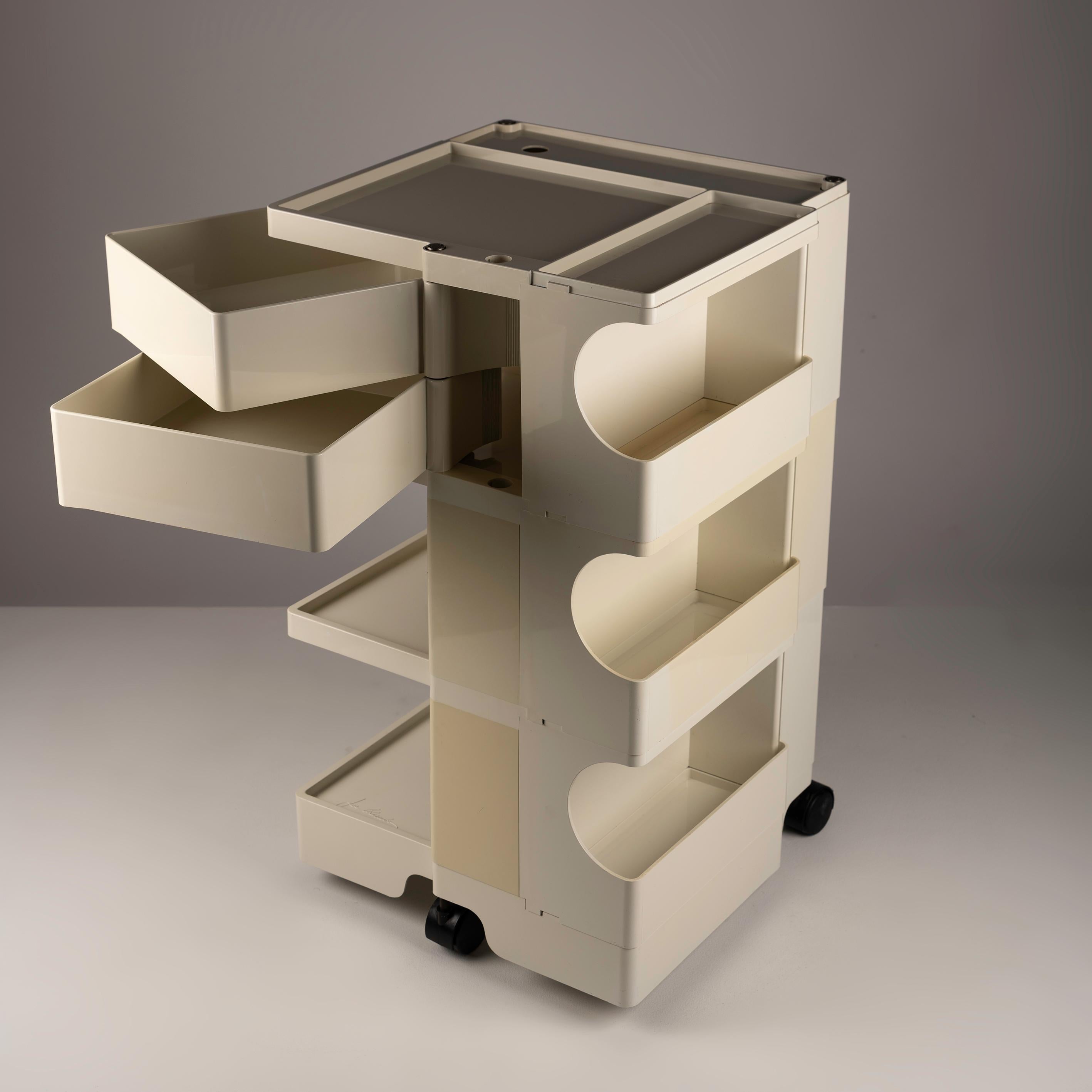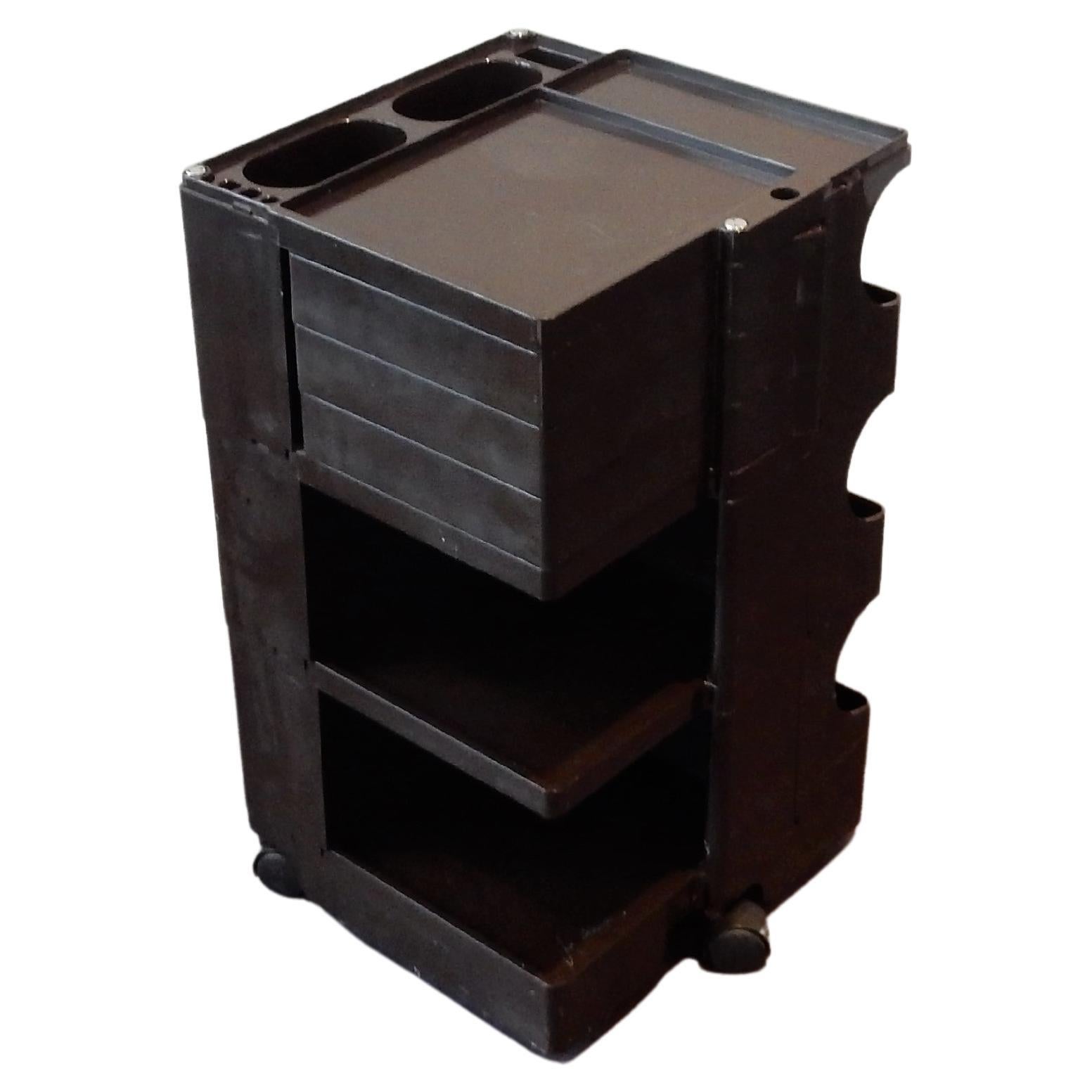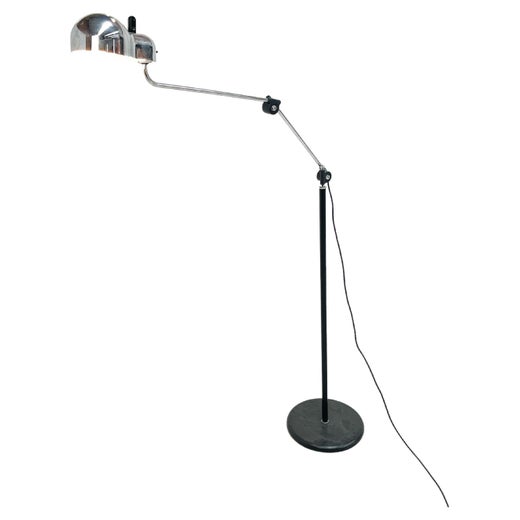Combi Center, Joe Colombo's storage unit for Bernini 1963/1997.
About the Item
- Creator:Joe Colombo (Designer)
- Design:
- Dimensions:Height: 63.78 in (162 cm)Diameter: 33.47 in (85 cm)
- Materials and Techniques:
- Place of Origin:
- Period:
- Date of Manufacture:1997
- Condition:Wear consistent with age and use.
- Seller Location:Misinto, IT
- Reference Number:1stDibs: LU9226236811212
Joe Colombo
He died tragically young, and his career as a designer lasted little more than 10 years. But through the 1960s, Joe Colombo proved himself one of the field’s most provocative and original thinkers, and he produced a remarkably large array of innovative furniture, lighting and product designs. Even today, the creations of Joe Colombo have the power to surprise.
Cesare “Joe” Colombo was born in Milan, the son of an electrical-components manufacturer. He was a creative child — he loved to build huge structures from Meccano pieces — and in college he studied painting and sculpture before switching to architecture. In the early 1950s, Colombo made and exhibited paintings and sculptures as part of an art movement that responded to the new Nuclear Age, and futuristic thinking would inform his entire career. He took up design not long after his father fell ill in 1958, and he and his brother, Gianni, were called upon to run the family company. Colombo expanded the business to include the making of plastics — a primary material in almost all his later designs. One of his first, made in collaboration with his brother, was the Acrilica table lamp (1962), composed of a wave-shaped piece of clear acrylic resin that diffused light cast by a bulb concealed in the lamp’s metal base. A year later, Colombo produced his best-known furniture design, the Elda armchair (1963): a modernist wingback chair with a womb-like plastic frame upholstered in thick leather pads.
Portability and adaptability were keynotes of many Colombo designs, made for a more mobile society in which people would take their living environments with them. One of his most striking pieces is the Tube chair (1969). It comprises four foam-padded plastic cylinders that fit inside one another. The components, which are held together by metal clips, can be configured in a variety of seating shapes. Tube chairs generally sell for about $9,000 in good condition; Elda chairs for about $7,000. A small Colombo design such as the plastic Boby trolley — an office organizer on wheels, designed in 1970 — is priced in the range of $700. As Colombo intended, his designs are best suited to a modern decor. As you see on 1stDibs, if your tastes run to sleek, glossy Space Age looks, the work of Joe Colombo offers you a myriad of choices.
- ShippingRetrieving quote...Ships From: Misinto, Italy
- Return PolicyA return for this item may be initiated within 3 days of delivery.
- 0+1 C sideboard by Franco Poli for Bernini, 2003By Franco PoliLocated in Misinto, ITThe 0+1 C sideboard was part of a living room product family designed by Franco Poli for Bernini in 2003. This series was characterized by the gentle lines, as seen in the long struc...Category
Early 2000s Italian Dressers
MaterialsPlexiglass, Nutwood
- Zag bookcase by Karim Rashid for Bernini, 2009By Karim RashidLocated in Misinto, ITThe works of the artist Karim Rashid, of Egyptian origin, are aimed at conveying his heritage and personal sensibility through the use of bold lines and glossy lacquer finishes in primary colors. Zag is a minimal bookshelf...Category
Early 2000s Italian Bookcases
MaterialsLaminate, Hickory
- Lella & Massimo Vignelli, Granpiano sideboard for Bernini, 2005.By Massimo and Lella VignelliLocated in Misinto, ITGranpiano is a piece of furniture born from the hands of the couple Lella & Massimo Vignelli and formally encapsulates the entire Vignelli philosophy: pure geometric forms and essent...Category
Early 2000s Italian Credenzas
MaterialsEbony
- secretaire 530 by Gianfranco Frattini, 1956 for BerniniBy Gianfranco FrattiniLocated in Misinto, ITIconic Italian desk model secretaire 530 designed by Gianfranco Frattini in 1956 and produced by the historic company Bernini. An object that combines design, craftsmanship, and func...Category
Antique 1850s Italian Desks
MaterialsNutwood
- Cupboard Pranzo by Silvio Coppola for Bernini, 1964By Silvio CoppolaLocated in Misinto, ITPranzo is a cupboard clearly inspired by the Lombard cabinetmaking tradition in walnut wood, reflecting Silvio Coppola's essential approach to design; a design free from fleeting sty...Category
Vintage 1960s Italian Credenzas
MaterialsHickory
- Gianfranco Frattini 804 Rolltop desk for Bernini, 1962By Gianfranco FrattiniLocated in Misinto, ITThe 804 secretaire is one of the most significant pieces of Gianfranco Frattini's creativity. Designed in 1962 for Bernini, it highlights Frattini's exceptional design prowess and th...Category
Mid-20th Century Italian Secretaires
MaterialsAluminum
- 'Combi center' by Joe Colombo for Bernini, 1963By Joe ColomboLocated in Brussels, BE'Combi center' by Joe Colombo for Bernini, 1963Category
Vintage 1960s Italian Mid-Century Modern Shelves
MaterialsWood
- Joe Colombo ''Boby 3'' Italian Portable Storage System for Bieffeplast, 1960sBy Joe Colombo, BieffeplastLocated in Roma, ITDesigned in 1969, Joe Colombo’s iconic "Boby 3" portable storage system was produced by Italian manufacturer Bieffeplast makes savvy use of space with its swivel design. This compact caddy is featured in the collection of the Museum of Modern Art in New York, but it’s perfect at home in domestic settings, offering ample storage with swing-out drawer trays provide and cubby holes for taller items. A one-of-a-kind piece that will complete a studio or a midcentury office. Measures (cm): height - 74 depth - 41 width - 43 Born in Milan in 1930, designer Cesare Colombo—who went by Joe—was the second of three brothers. His father, Giuseppe, was an industrialist who inherited a ribbon factory and turned it into an electrical conductor manufacturer. Colombo came to design relatively late, having spent most of his twenties pursuing painting and sculpture. He studied at the Accademia di Belle Arti in Brera, Milan, in the early 1950s. While there, he joined the Movimento Nucleare, an avant-garde art movement founded by Enrico Baj and Sergio Dangelo in 1951. Spurred on by international anxiety surrounding the nuclear bomb, this group of painters aimed to break free of the static boundaries of traditional painting. In 1953, Colombo made his first foray into design by creating a decorative ceiling for a Milan jazz club. In 1954, he made a series of television shrines for the Milan Trienniale. Inspired by these experiences, Colombo enrolled as an architecture student at Milan Polytechnic. When his father became ill in 1958, Colombo abandoned painting altogether; he and his younger brother, Gianni, took over the family business, using the factory as an experimental space for the latest production techniques and materials, including fiberglass, PVC, and polyethylene. In 1962, Colombo opened a design studio in Milan, from which he worked primarily on architectural commissions—including several ski lodges and mountain hotels—as well as product design. His furniture designs were characterized by optimistically bold, round forms, and he championed the notion of using modern technologies to create new design solutions. Colombo’s design career was cut tragically short in 1971 when he died of heart failure at age 41. However, he was remarkably prolific during his near decade as a designer. Notable projects include some of the most iconic designs of the 1960s, such as his 1963 Elda Armchair, made completely of fiberglass; the 1964 Ragno outdoor light, which doubled as a seat; the stackable Universale chair (1965/67), which came in varying heights and was created completely from polypropylene; his 1967 modular furniture series known as the Additional Living System, which was composed of different-size curved pieces that could be pinned together in various configurations to form chairs, sofas, or entire living areas, and which ultimately included the famous 1969 Tubo lounge chair; and the Optic alarm clock and Bobby trolley...Category
Vintage 1960s Italian Mid-Century Modern Commodes and Chests of Drawers
MaterialsPlastic
- Boby storage cabinet with wheels and compartments by Joe Colombo for BieffePlastBy Joe Colombo, BieffeplastLocated in Milano, ITFamous object trolley designed by Joe Colombo in the 1960s and produced by BIEFFEPLAST. The trolley for sale is dated 1980. It is in good condition, with small marks due to wear an...Category
Vintage 1980s Italian Modern Cabinets
MaterialsPlastic
- Joe Colombo for Bieffeplast Boby TrolleyBy Joe Colombo, BieffeplastLocated in Byron Bay, NSWItalian modern red plastic storage trolley Boby, on wheels, by Joe Colombo for Bieffeplast in 1968. Iconic and very useful in all environments, Boby model storage trolley with stru...Category
Vintage 1960s Italian Mid-Century Modern Cabinets
MaterialsPlastic
- Boby Trolley by Joe Colombo for Biefflast, Italy, 1970s.By Joe Colombo, BieffeplastLocated in BARCELONA, ESPurchasing the Boby trolley by Joe Colombo for Bieffeplast, Italy, from the 1970s is an opportunity to own a piece of iconic design history that seamlessly combines functionality and...Category
Vintage 1970s Italian Space Age Cabinets
MaterialsPlastic
- Brown 'Boby' trolley by Joe Colombo for Bieffeplast, Italy 1970'sBy Joe Colombo, BieffeplastLocated in Steenwijk, NLThis “Boby” trolley or portable storage system was designed by Joe Colombo in 1969. A very handy trolley made of ABS plastic. It has many storage options such as the fold-out shelves...Category
Vintage 1970s Italian Mid-Century Modern Commodes and Chests of Drawers
MaterialsPlastic
